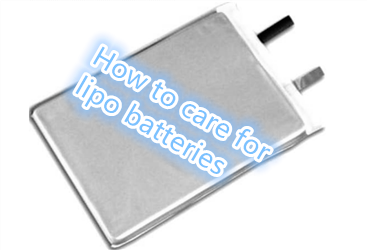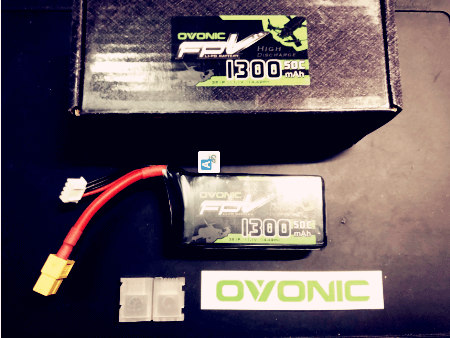
How to care for lipo batteries?
Lithium Polymer battery, also known as Lipo battery. It is also a kind of lithium battery, but compared with lithium ion battery (Li-ion) has a higher energy density, more compact, ultra-thin, Lightweight, and many obvious advantages such as high safety and low cost, it is a new type of battery.
Matters needing attention in battery operation
Since the battery cell is a flexible package, in order to ensure that the performance of the battery cell is not damaged, the battery cell must be handled carefully.
1.Aluminum foil packaging materials*Aluminum foil packaging materials are easily punctured by sharp parts, such as nickel sheets and sharp needles.
*Do not hit the battery with sharp parts
*The working environment should be cleaned to avoid the presence of sharp parts
*Do not pierce the battery with nails and other sharp objects
*It is forbidden to transport or store the battery together with metal objects such as necklaces, hairpins, etc.
2.Mechanical impact
*Do not drop, impact, or bend the battery
*Do not strike or step on the battery with a hammer
*Do not knock or throw the battery.
3.Short circuit*It is forbidden to short-circuit the battery at any time, it will cause serious damage to the battery cell
*It is forbidden to short-circuit the positive and negative terminals of the battery with metal objects such as wires
Standard environment for lipo battery testing
Ambient temperature: 20 ± 5 ℃
Relative humidity: 45 ~ 85%
The battery must be discharged before testing
Notes on charge and discharge of lithium polymer battery
- Charge
The charging current and charging voltage must not exceed the following standards(HV battery not included) . If the specified value is exceeded, it may cause damage to the battery's charge and discharge performance, mechanical performance and safety, and may cause heat and leakage.
*The battery charger must be capable of constant current and constant voltage charging;
*The charging current of the single battery during charging must be below 1C 5A;
*The temperature range during charging is 0 ~ + 45 ℃;
*When charging, the voltage cannot exceed 4.2V.
- Discharge
*The discharge current must not exceed the following standards, the discharge must be carried out within the scope of this standard.
*The discharge current of the single cell must be less than 2C 5A;
*The temperature range during discharge is -20 ~ + 60 ℃;
*The single cell discharge end voltage is not less than 2.75V.
- Overdischarge
It should be noted that during a long period of non-use of the battery cell, it may be in a certain over-discharge state due to its self-discharge characteristics. In order to prevent the occurrence of over-discharge, the battery should be charged regularly to maintain its voltage above 3.0V. *Over-discharge will cause the loss of cell performance and battery function.
*Do not over-discharge the single battery below 2.5V.
- It is required to add qualified protection circuit board in specific application.
lithium polymer battery storage
*The long-term storage environment of the battery is: temperature -20 ~ + 35 ℃
*Relative humidity 45 ~ 75%
*When the storage period of the battery is nearly one year, the standard charging method should be used to charge the battery by 10% to 50%.
Transportation of lipo batteries
The battery should be transported in a 10% ~ 50% state of charge.
Other instructions for lipo batteries
- In order to prevent possible leakage, heat generation and explosion of the battery, please pay attention to the following precautions:
*It is forbidden to disassemble the battery cell under any circumstances.
*It is forbidden to immerse the battery in water or seawater, and it must not be damp.
*Do not use or place batteries near heat sources, such as fires, heaters, etc.
*Do not heat or throw the battery into fire.
*Do not directly solder the battery.
*It is forbidden to charge in the vicinity of fire or very hot environment.
*Do not put the battery in a microwave oven or high-pressure container.
*It is forbidden to use or place the battery under high temperature (such as in strong sunlight or very hot cars), otherwise it will cause overheating, fire or function deterioration, and reduced life.
- In theory, there is no flowing electrolyte in the lipo battery, but in case of electrolyte leakage and contact with the skin, eyes, or other parts of the body, the electrolyte should be flushed with water immediately and consult a doctor.
- It is forbidden to use damaged batteries (damaged plastic edge of batteries, damaged casing, smell of electrolyte gas, electrolyte leakage, etc.).
If the electrolyte leaks or emits the smell of the electrolyte, the battery should be kept away from the fire source to avoid fire or explosion.




Leave a comment